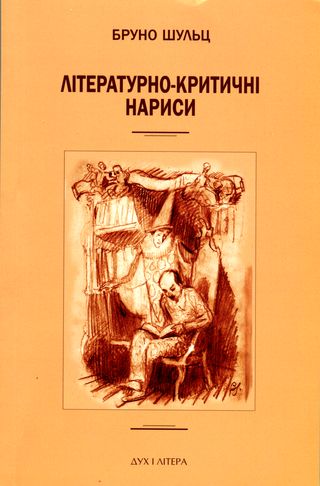Читати книгу - "Три сили. Як виховують в успішних спільнотах"
Шрифт:
Інтервал:
Добавити в закладку:
386 Інтерв’ю з Хосе Піко, директором і президентом JPL Investments Corp., Маямі, штат Флорида. (Інтерв’ю проводила Ейлін Зелек 6 січня 2012 року) (документ у авторів); див. також Gonzalez-Pando, The Cuban Americans, p. 37.
387 Susan Eva Eckstein, The Immigrant Divide: How Cuban Americans Changed the US and Their Homeland (Routledge, 2009), p. 83; David Rie. , The Exile: Cuba in the Heart of Miami (New York: Simon & Schuster, 1993), p. 48; Gonzalez-Pando, The Cuban Americans, pp. 34–36.
388 Телефонне інтерв’ю з професоркою Домітілою Фокс, Міжнародний університет Флориди. (Інтерв’ю проводила Ейлін Зелек 17 березня 2012 року) (документ у авторів); див. також Garcia, Havana USA, pp. 18–20
389 Robert C. Solomon, “Nietzsche and the Emotions”, in Jacob Golomb, Weaver Santaniello and Ronald L. Lehrer, Nietzsche and Depth Psychology (Albany, NY: State University of New York Press, 1999), pp. 127, 142.
390 Цей абзац взято переважно із Amy Chua, Day of Empire: How Hyperpowers Rise to Global Dominance — and Why They Fall (New York: Doubleday, 2007), pp. 4, 6–7; див. також Pierre Briant, From Cyrus to Alexander: A History of the Persian Empire, Peter T. Daniels, trans. (Winona Lake, Ind.: Eisenbrauns, 2002), pp. 5–7; Hooman Majd, The Ayatollah Begs to Di.er: The Paradox of Modern Iran (New York: Doubleday, 2008), p. 163.
391 “Xerxes and the Persian Army: What They Really Looked Like”, A Persian’s Perspective, March 18, 2007, http://persianperspective.wordpress. com/2007/03/18/xerxes-and-the-persian-army-what-they-really-looked-like/.
392 Kenneth M. Pollack, The Persian Puzzle: The Con.ict Between Iran and America (New York: Random House, 2004), pp. 3, 30–1.
393 Pollack, The Persian Puzzle, p. 3; див. Chua, Day of Empire, p. 4.
394 Див. Chua, Day of Empire, p. 4.
395 Див., наприклад, Majd, The Ayatollah Begs to Di. er, p. 164; Robert Graham, Iran: The Illusion of Power (London: Croom Helm, 1978), p. 192. 396 Див. Majd, The Ayatollah Begs to Di. er, p. 163 397 Pollack, The Persian Puzzle, p. 3; див. також Graham, Iran, p. 190–2 (опис іранського «відчуття вищості» і «відчуття унікальності», що «походять з дещо романтизованих уявлень про власну історію, але їхня сутність полягає у гнучкості, з якою їм вдавалося пережити хвилі завоювань і засвоїти культурні впливи, не втративши власної ідентичності»); Kathryn Babayan, Mystics, Monarchs, and Messiahs: Cultural Landscapes of Early Modern Iran (Cambridge, MA: Harvard University Press, 2002), p. 492–3 (зазначено, що націоналістичні рухи ХХ століття в Ірані «недооцінили перську вищість»).
398 Chua, Day of Empire, p. 27. 399 Majd, The Ayatollah Begs to Di. er, p. 164; див. також ibid., p. 12 (згадано авторового дідуся, «який також був аятолою»); Chua, Day of Empire, pp. 24–26. 400 Joya Blondel Saad, The Image of Arabs in Modern Persian Literature (University Press of America, 1996), pp. 6–7. 401 Saad, The Image of Arabs in Modern Persian Literature, p. 8 (цитата із класичної праці ХІ століття Насера Хосрова).
402 Sadeq Hedayat: Ibid., p. 29.
403 Ibid., p. 37 (цитування Садега Хедаята).
404 Janet Afary, The Iranian Constitutional Revolution, 1906–1911: Grassroots Democracy, Social Democracy, and the Origins of Feminism (New York: Columbia University Press, 1996), p. 25.
405 Shadi Akhavan, “Close Enough” (op-ed), Iranian.com, Aug. 25, 2003, http://iranian.com/Opinion/2003/August/Close/index.html (дата звернення: 1 березня 2013 року).
406 Graham, Iran, p. 194; див. також Graham E. Fuller, “The Center of the Universe”: The Geopolitics of Iran (Boulder, CO: Westview Press, 1991), p. 20. 407 Graham, Iran, p. 194. 408 Abbas Amanat, “The Persian Complex”, New York Times, May 25, 2006. 409 Tara Wilcox-Ghanoonparvar ed.,Hyphenated Identities: Second-Generation Iranian-Americans Speak (Costa Mesa, CA: Mazda Publishers, 2007), p. 7. 410 MohsenM. Mobasher, Iranians in Texas: Migration, Politics, and Ethnic Identity (Austin, TX: University of Texas Press, 2012), p. 8. 411 Див. Mobasher, Iranians in Texas, p. 8; Tara Bahrampour, “Persia on the Pacific”, The New Yorker, November 10, 2003.
412 Див. Andre Dubus III, House of Sand and Fog (New York: W.W. Norton & Company, 2011); Bahrampour, “Persia on the Paci.c”; Carol Gerster, “CRASH: A Crash Course on Current Race/Ethnicity Issues”, The Journal of Media Literacy 55, nos. 1 & 2.
413 Див., наприклад, Mobasher, Iranians in Texas, p. 34. 414 Mitra K. Shavarini, Educating Immigrants: Experiences of Second-Generation Iranians (New York: LFB Scholarly Publishing, 2004), pp. 38–41. 415 Shadi Akhavan, “Take It from a Good Girl: Fight Back!”, The Iranian, December 27, 2002, http://iranian.com/Features/2002/December/Tough/index.html.
416 Wilcox-Ghanoonparvar ed., Hyphenated Identities, p. 6; див. також Shavarini, Educating Immigrants, pp. 7, 113–14; Maryam Daha, “Contextual Factors Contributing to Ethnic Identity Development of Second-Generation Iranian American Adolescents”, Journal of Adolescent Research 26, no. 5 (2011), pp. 543, 554, 563; Mohsen Mobasher, “Cultural Trauma and Ethnic Identity Formation Among Iranian Immigrants in the United States”,American BehavioralScientist 50 (2006), pp. 100, 108.
417 Mobasher, Iranians in Texas, pp. 45–7. 418 Shavarini, Educating Immigrants, p. 5; Mobasher, “Cultural Trauma and Ethnic Identity Formation Among Iranian Immigrants in the United States”, pp. 103, 113. 419 “Iranian Census 2010 PSA with Maz Jobrani”, http://www.youtube.com/watch?v=kgoLjFJ0rVg. 420 Mobasher, Iranians in Texas, p. 8. 421 Maryam Daha, “Contextual Factors”, pp. 543, 547, 552–4. 422 Shavarini, Educating Immigrants, p. 6. 423 Див., наприклад, Daha, “Contextual Factors”, pp. 560–1; Mehdi Bozorgmehr and Daniel Douglas, “Success(ion): Second-Generation Iranian Americans”, Iranian Studies 44, no. 1 (January 2011), pp. 5, 7. 424 Shavarini, Educating Immigrants, p. 150; див. також pp. 147–51; див. також Daha, “Contextual Factors”, pp. 560–1. 425 Wilcox-Ghanoonparvar, Hyphenated Identities, pp. 24–5. 426 Daha, “Contextual Factors”, pp. 550, 554–8. 427 Shavarini, Educating Immigrants, p. 113.
428 Shavarini, Educating Immigrants, pp. 112–3; див. також Ali Akbar Mahdi, “Ethnic Identity
Увага!
Сайт зберігає кукі вашого браузера. Ви зможете в будь-який момент зробити закладку та продовжити читання книги «Три сили. Як виховують в успішних спільнотах», після закриття браузера.

